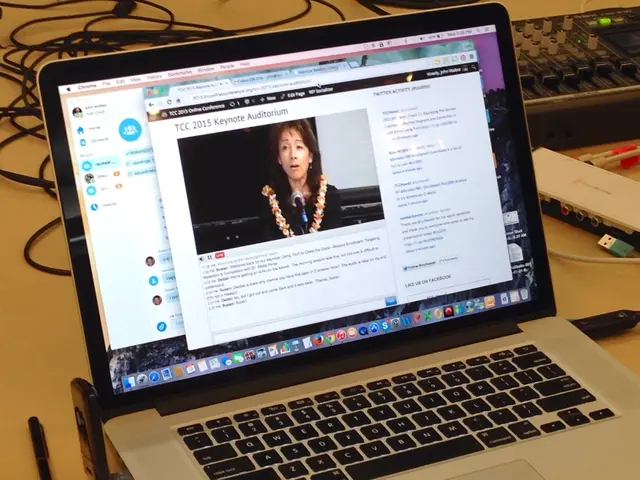An Unexpected Shock: A Tiny Fraction Versus a Massive One
South African Death Toll from HIV Potentially Severely Underestimated, Research Indicates
A study conducted by the South African Medical Research Council (SAMRC) shook up the health spheres with some shocking findings - compared to Statistics South Africa (Stats SA), the study revealed that 23% of deaths in 2017/2018 were due to HIV, while Stats SA reported just 5.7%.
It's no secret that Stats SA's figures often vary from other sources. This inconsistency can largely be attributed to Stats SA reporting a simple count of what is written on death certificates. However, HIV is often overlooked on death certificates, even when it's the underlying cause of death. The SAMRC study, on the other hand, delved deeper, examining autopsy reports, death certificates, medical records, and interviews with next-of-kin to arrive at its eye-opening estimate.
But what truly raised eyebrows was the significant discrepancy between the SAMRC findings and previous estimates. Previously, the real number of HIV deaths was thought to be around double the Stats SA number; this study, however, revealed a four-fold difference. For instance, Thembisa, the leading model of HIV in South Africa, estimated about 12% of deaths in 2018 were due to HIV.
In a media statement, Prof Debbie Bradshaw, study co-author and chief specialist scientist at the SAMRC Burden of Disease Research Unit, stated, "Accurate mortality data is essential for informed public health policies and targeted interventions; however, this study highlights critical gaps in our cause-of-death data, particularly in the underreporting of HIV/AIDS and suicides."
A Methodical Approach
This study was executed across three phases, investigating deaths registered in 27 randomly selected health subdistricts between September 1, 2017, and April 13, 2018. In addition to analyzing autopsy reports, death certificates, and medical records, trained fieldworkers interviewed next-of-kin, employing a World Health Organisation questionnaire translated into nine official South African languages to conduct verbal autopsies.
Data was gathered for more than 26,000 deaths, though not all types of data were available for each death. Medical records were accessible for over 17,600 cases, autopsy reports for 5,700, and approximately 5,400 verbal autopsies were conducted. Striving to save costs, not all medical records were thoroughly reviewed.
Ultimately, the researchers were able to compare their assessment of the causes of over 15,000 deaths to the causes stated on the death certificates.
Disagreement in Perspective
The researchers discovered that there was "poor agreement" between the causes of death assessed via the multiple sources and the causes mentioned on death certificates. The cause of death was consistent in only 37% of cases. Additionally, the study uncovered substantial underreporting of suicide as a cause of death.
Behind the Discrepancy
The discrepancy between the SAMRC and Stats SA HIV mortality figures can be attributed to methodological differences, compounded by undercounting challenges in vulnerable populations. Structural inequalities like wealth, education, and housing disparities hinder healthcare access in slum populations, leading to higher HIV prevalence and mortality rates in these areas. The SAMRC study's comprehensive approach accounts for these structural inequalities overlooked by Stats SA's administrative data.
Furthermore, HIV-related deaths are frequently misclassified due to secondary causes (e.g., opportunistic infections), resulting in undercounting in official statistics. Historic undercounting in transient or underserved communities also contributes to the discrepancy between the two data sources. Stats SA’s figures may lack sufficient granularity to accurately distinguish HIV's role in mortality within complex health landscapes.
- The South African Medical Research Council (SAMRC) study,conducting a comprehensive investigation, revealed a four-fold difference in HIV deaths compared to previous estimates, surprising many in the health and wellness field.
- Prof Debbie Bradshaw, study co-author, emphasized that accurate mortality data is crucial for informed public health policies and targeted interventions, but this study highlighted critical gaps in our cause-of-death data, particularly in the underreporting of HIV/AIDS and suicides.
- The discrepancy between SAMRC and Stats SA HIV mortality figures can be attributed to methodological differences and undercounting challenges in vulnerable populations, such as slums where structural inequalities like wealth, education, and housing disparities hinder healthcare access.
- The SAMRC study's holistic approach, involving autopsy reports, medical records, interviews with next-of-kin, and a systematic investigation, accounted for these structural inequalities that were overlooked by Stats SA's administrative data.
- The comprehensive methodology of the SAMRC study uncovered substantial underreporting of suicide as a cause of death, further emphasizing the need for better mental health data collection and reporting in South Africa.







